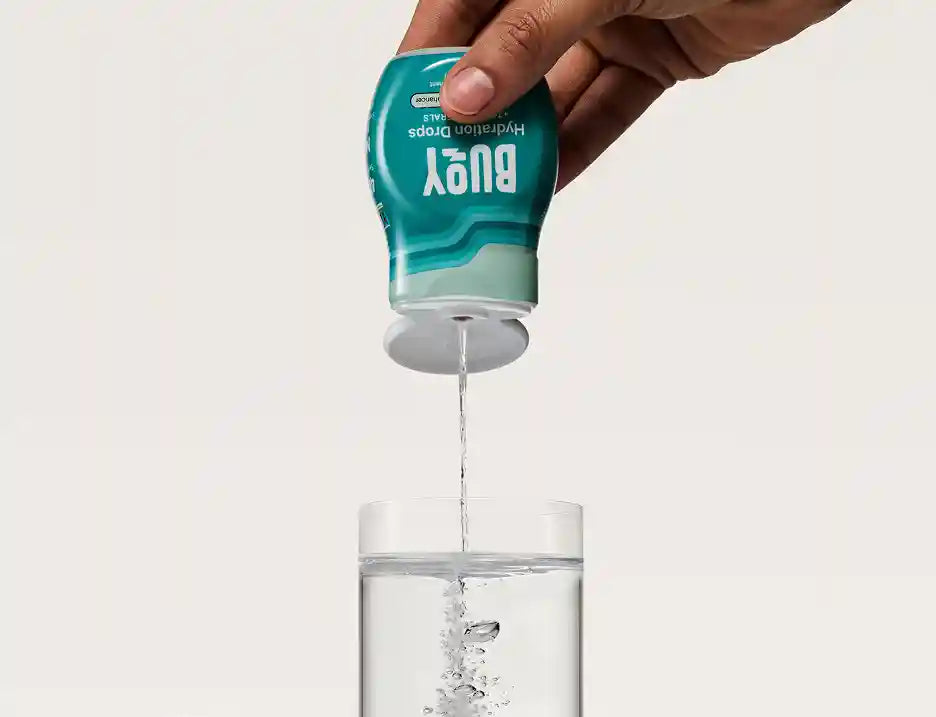
POTS and Workplace: Managing Your Career
Have you ever felt dizzy standing up from your desk, or struggled to focus during an important meeting due to fatigue?
For those living with Postural Orthostatic Tachycardia Syndrome (POTS), these challenges can be daily occurrences in the workplace. But what if you could turn these obstacles into opportunities for growth and success?
Navigating a career while managing POTS symptoms may seem daunting, but it's far from impossible. In fact, with the right strategies and support, you can not only maintain your professional life but thrive in it.
This guide offers essential POTS career management strategies and workplace tips to help you navigate your professional life while managing your condition.
Essential Takeaways:
- Requesting Workplace Accommodations: Understanding and implementing appropriate accommodations for POTS in the workplace can dramatically improve your ability to manage symptoms and maintain productivity. From flexible hours to ergonomic workstations, these adjustments can be key to career success.
- Communicating Openly with Your Employer: Discussing your condition with your employer is crucial for creating a supportive work environment. By clearly explaining POTS and your needs, you can foster understanding and collaborate on solutions that benefit both you and your workplace.
Whether you're newly diagnosed or have been balancing POTS and work for years, you'll find valuable insights to help you take control of your career while prioritizing your health. Let’s explore how you can transform your workplace experience and set yourself up for success, one step at a time.
- Managing POTS Symptoms at Work
- Workplace Accommodations for POTS
- Talking to Your Employer About POTS
- Balancing Work and Health When Living with POTS
- Thrive in Your Career with POTS
Managing POTS Symptoms at Work
Effective POTS workplace management involves a combination of symptom control strategies and proper communication with your employer. Here are some practical tips:
- Stay Hydrated: Proper hydration is essential for POTS patients. Consider using Buoy’s Hydration Drops to enhance your water intake. These drops contain essential electrolytes that can help maintain fluid balance and potentially reduce symptoms.
- Take Regular Breaks: Stand up and move around periodically to promote blood circulation. If possible, try to take short walks during your breaks.
- Manage Stress: Stress can exacerbate POTS symptoms. Practice stress-reduction techniques like deep breathing or mindfulness during your workday.
- Elevate Your Feet: If your job allows, use a footrest to keep your feet elevated while sitting. This can help improve blood flow.
- Wear Compression Garments: Compression socks or stockings can help promote blood flow and reduce symptoms.
- Maintain a Consistent Eating Schedule: Regular, small meals can help stabilize blood sugar levels and potentially reduce symptoms. Learn more about what to eat and what to avoid to improve POTS symptoms in our guide, POTS and Nutrition: Vitamins and Supplements.
By implementing these strategies, you can better manage your POTS symptoms throughout the workday. Remember, consistency is key, and it may take some time to find the right combination of techniques that work best for you.
Don’t hesitate to adjust your approach as needed and communicate with your employer if you need additional support or accommodations.

Workplace Accommodations for POTS
Understanding and implementing appropriate workplace accommodations for POTS is crucial for maintaining a successful career. Here are some accommodations to consider and how they can benefit you.
Flexible Work Hours
Flexible work hours can be a game-changer for POTS patients. This accommodation allows you to work during times when your symptoms are less severe.
For instance, if you experience more intense symptoms in the morning, you might arrange to start your workday later. This flexibility can help you manage your energy levels more effectively and potentially reduce the frequency of symptom flare-ups.
Remote Work Options
Working from home, even part time, gives you greater control over your environment and symptoms.
In a home office, you can more easily adjust your workspace, take breaks as needed, and manage your symptoms without the added stress of being in a public space. This option can be particularly beneficial on days when your symptoms are more severe.
Ergonomic Workstation
An adjustable desk that allows for both sitting and standing can be highly beneficial for POTS patients. The ability to change positions throughout the day can help with blood flow and potentially reduce symptoms.
Consider requesting an ergonomic chair, a footrest, and other accessories that can help you maintain a comfortable and supportive posture throughout the workday.
Access to a Quiet Rest Area
Having access to a space where you can lie down if needed can be crucial for managing severe symptoms. This could be a dedicated quiet room or even a private office space where you can retreat when you need to elevate your feet or take a moment to recover from a symptom flare-up.
Having this option can provide peace of mind and allow you to manage your condition more effectively at work.
Relaxed Dress Code
A relaxed dress code can allow for wearing compression garments or more comfortable clothing. Compression socks or stockings can be particularly helpful for POTS patients, as they promote blood flow from the legs back to the heart.
If your workplace typically requires formal attire, discuss the possibility of a modified dress code that accommodates your medical needs while still maintaining a professional appearance.
Permission to Bend the Rules
Easy access to hydration and nutrition is essential for managing POTS. If your workplace doesn't already allow it, ask your manager if you can have water and snacks at your workstation.
This can help you maintain stable blood sugar levels and stay hydrated throughout the day. Consider keeping Buoy's Hydration Drops or Energy Drops at your desk for quick electrolyte replenishment when needed.
Requesting Accommodations
When requesting these accommodations, be prepared to explain how these changes will help you perform your job more effectively. It may be helpful to provide documentation from your healthcare provider to support your requests.
Remember, these accommodations are not just about managing your symptoms—they're about enabling you to contribute your best work and maintain your career despite the challenges of POTS.
Talking to Your Employer About POTS
Open communication about managing POTS at work is key to ensuring you receive the support you need. Discussing POTS with your employer can be daunting, but it's often necessary.
Here's how to approach this conversation:
- Prepare in Advance: Research POTS and be ready to explain it in simple terms. Consider providing educational materials.
- Choose the Right Time and Place: Schedule a private meeting with your supervisor or HR representative.
- Be Honest and Clear: Explain your condition, how it affects you, and what accommodations could help you perform your job better.
- Focus on Solutions: Come prepared with suggestions for accommodations that could help you manage your symptoms at work.
- Know Your Rights: Familiarize yourself with the Americans with Disabilities Act (ADA) and your company's policies on accommodations.
- Follow Up in Writing: After your meeting, send an email summarizing what was discussed and any agreed-upon accommodations.
Remember, open communication is key to creating a supportive work environment. By approaching this conversation with preparation and a positive attitude, you can help your employer understand your needs and work together to find solutions that benefit both you and the company.

Balancing Work and Health When Living with POTS
Successful POTS career management involves finding the right balance between your professional responsibilities and health needs. Here are some strategies:
- Set Realistic Goals: Be honest with yourself about what you can accomplish given your health constraints.
- Prioritize Tasks: Focus on the most important tasks when your energy levels are highest.
- Learn to Say No: Don't overcommit yourself. It's okay to decline additional responsibilities if they'll compromise your health.
- Use Your Sick Days Wisely: Don’t hesitate to take a day off when you need it to prevent symptom flare-ups.
- Develop a Support Network: Connect with colleagues who understand your condition and can offer support.
- Consider Part-Time or Flexible Work Arrangements: If full-time work is too challenging, explore other options that better suit your needs.
- Stay Prepared: Keep Buoy's Rescue Drops or Rescue Salt on hand for quick symptom relief when needed.
Finding the right balance between your career and health may take time and experimentation. Be patient with yourself and don't hesitate to adjust your strategies as needed. With careful planning and self-awareness, you can maintain a fulfilling career while effectively managing your POTS symptoms.
For more ways to make living with POTS easier, check out our guide: Lifestyle Changes to Manage POTS.
Thrive in Your Career with POTS
Living with POTS doesn't mean you can't have a successful career. By implementing these POTS career advice strategies and working with your employer, you can create a supportive work environment that allows you to thrive professionally while managing your condition.
Learn More About POTS
Remember, everyone's experience with POTS is unique, so it may take some trial and error to find what works best for you. For more information on managing POTS, check out our collection of POTS guides.
Try Buoy at Work
And don’t forget to explore Buoy's range of electrolyte products that can support your POTS management strategy. From Hydration Drops to Rescue Salt, we have solutions designed to help you stay balanced and hydrated throughout your workday.

Buoy’s range of hydration solutions: Hydration Drops for everyday use and Rescue Salt for intense hydration needs. The perfect way to manage your POTS symptoms at home or on the go.
References:
1. Raj SR. Postural tachycardia syndrome (POTS). Circulation. 2013 Jun 11;127(23):2336–42.
https://doi.org/10.1161/CIRCULATIONAHA.112.144501
2. Ross AJ, Medow MS, Rowe PC, Stewart JM. What is the best treatment for orthostatic intolerance in POTS? Clin Auton Res. 2013;23(5):287–291.
https://doi.org/10.1007/s10286-013-0227-z
3. Centers for Disease Control and Prevention (CDC): Disability Inclusion and Accommodation in the Workplace.
https://www.cdc.gov/ncbddd/disabilityandhealth/employment.html
4. National Institutes of Health (NIH): POTS – Postural Orthostatic Tachycardia Syndrome Overview.
https://www.ninds.nih.gov/health-information/disorders/postural-tachycardia-syndrome-pots
5. Job Accommodation Network (JAN): Accommodation Ideas for Employees with POTS.
https://askjan.org/disabilities/Postural-Orthostatic-Tachycardia-Syndrome-POTS.cfm





